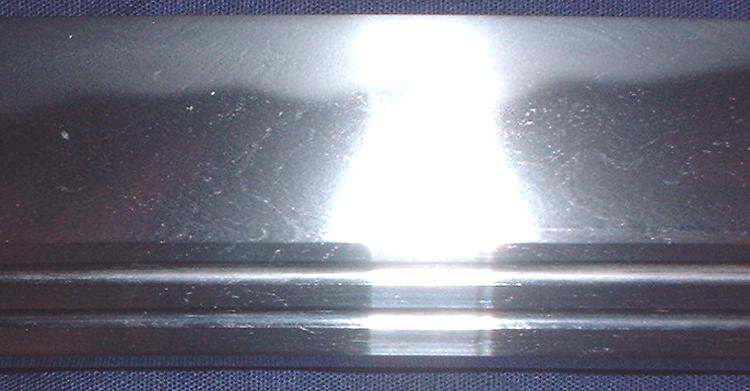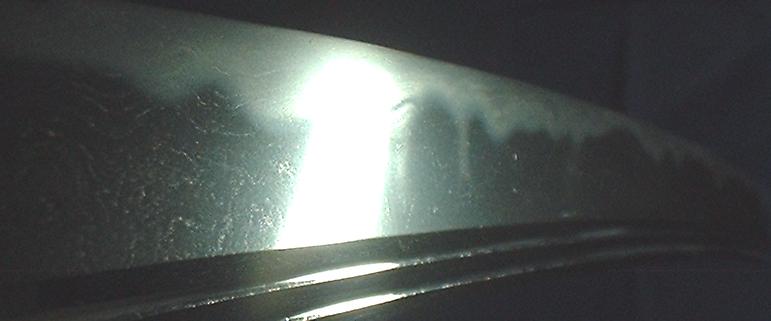Wakizashi, O-suriage, (Shizu)
A very good blade from 14th century (Namboku-cho period).
The signature was cut off by the work that shortened the blade length so
much. The work may be done in 16th century. The shape has lost fumbari
but keep an elegance still now.
The steel is very fine and bright with full particles
(jinie), and the layer pattern is visible wood grain. It looks wild and
powerful.

The hamon is bright nie with dense nioi bed, and its pattern is gunome
that moves well high and low. Some tops of the hamon rise up out of the
hadori (white pattern what polisher designed). The hamon in kissaki is
mild nie and nioi making a little large round pattern, and the particles
spread so widely at the top of it.
The layer pattern effects hamon as kinsuji and sunagashi. It feels very
wild and powerful. But the appearance doesn't feel rough but elegant, because
the hamon line is mild by the dense nioi bed.
This state of hamon particles is very appreciated, and
it is a reason why this blade is attributed to 14th century.

This modern style polishing doesn't have much make up.
The white pattern is not so troublesome to see hamon. Such a calm polishing
is good enough to study blade even if it is modern style.
It is not so easy to find such an excellent blade even in Japan. Sometimes
we can find unsigned blades with paper attributed to Soshu tradition, but
many of them include some doubt in its character. On this blade, the character
means Soshu tradition in 14th century undoubtedly, especially Mino tradition.
This blade should be held by advanced collector who try
to understand old good blades. It is not suitable for beginners who hate
any flaws and want perfection.
A masterpiece never mean perfect blade. A masterpiece can have flaws and
has far bigger excellence.
Home > Gallery, Sword > Shizu
